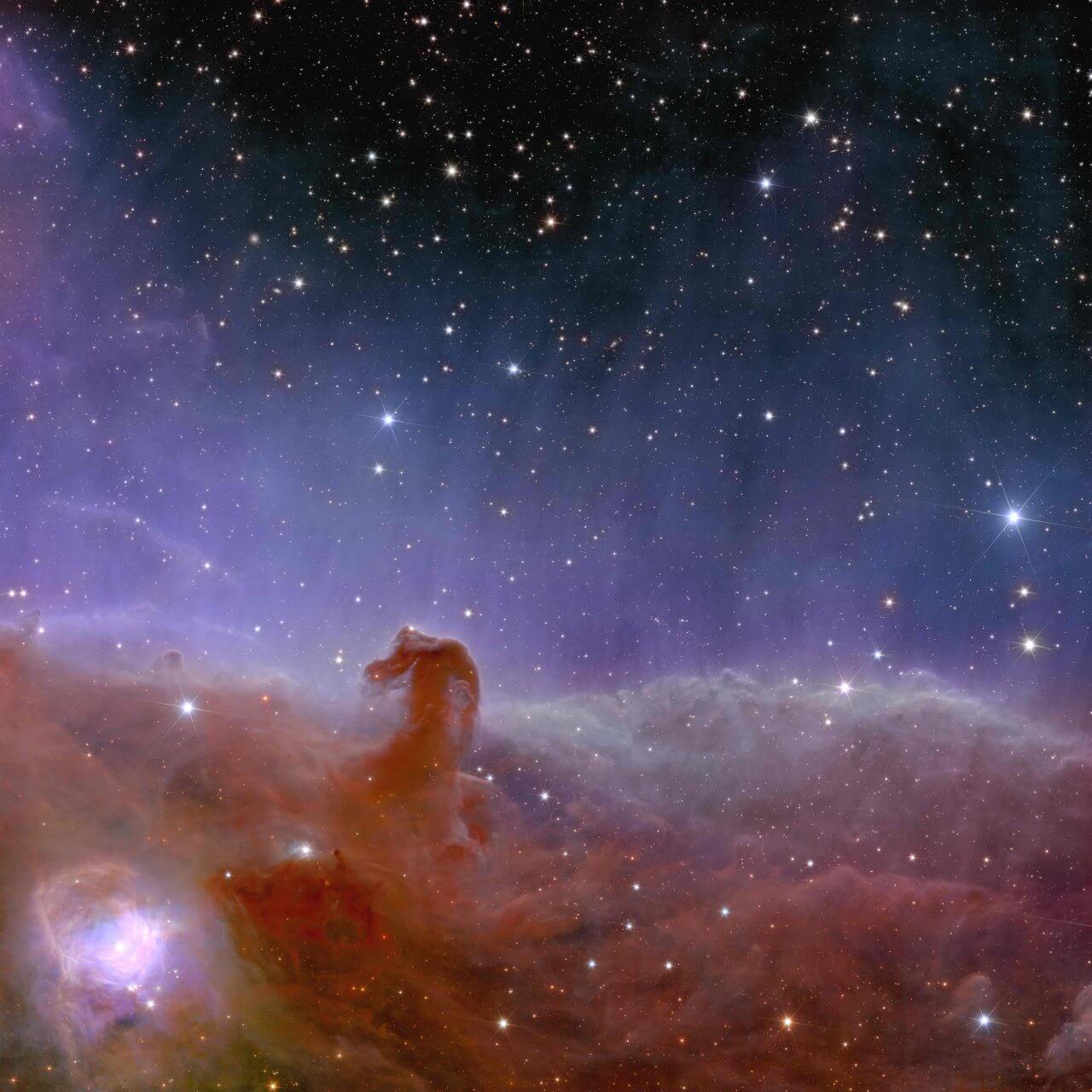This is an image of the famous dark Horsehead Nebula and its surroundings, located about 1,375 light-years away in the direction of the Orion constellation. The name comes from the shape of the cloud at the bottom left center of the image, which resembles a horse’s head.
[▲ “سديم رأس الحصان” تم تصويره بواسطة تلسكوب إقليدس الفضائي التابع لوكالة الفضاء الأوروبية (الائتمان: ESA/Euclid/Euclid Consortium/NASA، معالجة الصور بواسطة J.-C. Cuillandre (CEA Paris-Saclay)، G. Anselmi) ]
A dark nebula is a celestial body with a high density of gas and dust. It is called a “dark” nebula because the dust blocks visible light emanating from celestial bodies on the other side, making the area appear dark from Earth. In the direction of the Orion constellation, there is a vast star-forming region called the Orion Molecular Cloud, of which the Horsehead Nebula is a part.
This image was created based on data acquired by the Visible Light Observer (VIS) and the Near-Infrared Spectrophotometer (NISP) of the European Space Agency’s Euclid Space Telescope. Euclid observes not only visible light, but also infrared wavelengths that cannot be detected by the human eye, so images are colored according to the wavelength at the time of data acquisition.(About 700 nm is colored blue, about 1.1 µm is colored green, and about 1.7 µm is colored red).
The blue glow behind the horse’s head is light emitted by excited hydrogen gas, which normally appears red to the human eye. The Horsehead Nebula in the foreground also appears dark to the human eye, but in this case the regions rich in dust and molecular gas are colored red, making it look like a red horse standing on the ground stained by a Massou sunset.
The Euclid Space Telescope, which was launched in July 2023, was developed to explore the secrets of dark energy and dark matter. Based on observational data from Euclid, which aims to image billions of galaxies, we will create a 3D map of galaxies distributed along the large-scale structure of the universe, which are thought to be shaped by dark matter. It is also expected to deepen our understanding of dark energy, which is thought to accelerate the expansion of the universe.
The first image was released by the European Space Agency on November 7, 2023 as one of the first full-color images from the Euclid mission. Astronomers have discovered new data in this region obtained from Euclid observations, including forming planets with masses similar to Jupiter, brown dwarfs with properties intermediate between stars and planets, and young, newborn planets, meaning we want to discover stars. .
source
- European Space Agency – Euclid’s view of the Horsehead Nebula
Text Editing/Syrian Studies Department

“Travel maven. Beer expert. Subtly charming alcohol fan. Internet junkie. Avid bacon scholar.”







More Stories
The ranking of the best survival horror games selected by the IGN US editorial team has been released! Resident Evil RE:2 ranked first
Enjoy a hot cigarette while looking at whales and tropical fish under the sea ⁉︎ “Ploom Dive” is an amazing spatial video experience using Apple Vision Pro
Apple Watch now supports sleep apnea, watchOS 11 released – Impress Watch